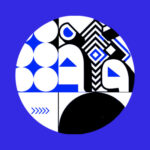

Locate the spot in the parking lot and turn your back to the fish market.
You will be faced with its mirror: another white tinted warehouse, the slaughterhouse.
If you talk to one of the fishermen, you will realize it has been shut for over a year now
by the Ministry of Health.
You hear about the completed upgrade to meet the Ministry’s standards, but you do not notice them.
The warehouse remains suspended from daily life.
Get closer to it.
As you do, you are getting closer to the only structure adjacent to the slaughterhouse —
the animal waste shed, barely standing.
Moldy steel sheets form its enclosure and muddy soil makes up its floor.
Notice the holes in the structure and allow them to frame your view of the abandoned space behind it.
This is the moment when decay makes its first appearance. Remember it.
Absorb the smell around you.
You will eventually hold your breath while you attempt to get closer and beyond the structure.
The smell is heavy and burdening, but with the absence of breath, it is silent.
You will be curious about the potency of the smell and its source.
Allow it to distract you.
It could be the fish, eaten by the blue flies descending from the sky.
Keep pondering.

Attempt to cross the entry gate of the site once you've reached it.
Cars are parked, but there is no one, except for a single staff person who gently stops you.
He will let you into the vicinity of the site and its main hall, but will ask you to refrain from taking pictures.
As you embark on your roaming, you will be bombarded
with an interior field of columns structuring the space.
You will come tangent to the line where cows and sheep were processed.
They occasionally escaped the line and roamed the hall as well. Keep imagining.
Indulge in the sound of the birds above you.
They seem to have taken over the space with their hovering presence, yet you can’t see them.
Allow them to become the new cows and sheep roaming the hall and focus on the echoes taking over the space.
You will eventually be distracted by the smell, transforming what you hear all around you.
This is the smell of something other than the new cow and sheep. Continue walking.
Do not step on the faded brown spots on the floor.
Indulge in the color and its fading quality.
You will notice that this is dried blood, more than a year’s old blood,
morphed by the flies inhabiting the space, attacking.
Follow the spots of blood on the floor.
You will eventually hit a wall with several high windows.
This is when the modular waste mountain makes its first partial appearance. Remember it.
As you look back or around, you will notice you remain indoors, but the smell is following you, relentlessly.
This is not the smell of old blood. Continue.

Exit the process line and enter the temporary farm line.
This is where the animals awaited their turn before being taken into the hall.
You are the absent and the present animal, guided by the metal railing.
Make note of the upgrade.
The materials are new, but you will still feel the decay of everything, persistent.
As you keep playing the part along the railing, you will find yourself at the starting point of the animal farm.
You are outside the main hall now.
As you look around, notice the white mountain is still there.
The smell, always.
Decay, everywhere.
Depart from the slaughterhouse.
As you do, you will walk through various obstacles that will gently cause you to slow down.
These are the remains of the last activity that inhabited the space. Keep imagining.
As you leave everything behind, you will come tangent to the view and sound of something else:
a brown body of water surrounded by wasteland, crushing its way into the sea.
You are faced with the river.
Mustapha Jundi (b. 1976, Tripoli, Lebanon) is an architect and artist based in Beirut. He holds a BArch from the American University of Beirut and an MArch from Yale University. His architectural practice addresses different scales of intervention, from object to building, with a focus on spatial transformation. He was a fellow at Ashkal Alwan's Home Workspace Program (2015-16) where he worked with video and text.





